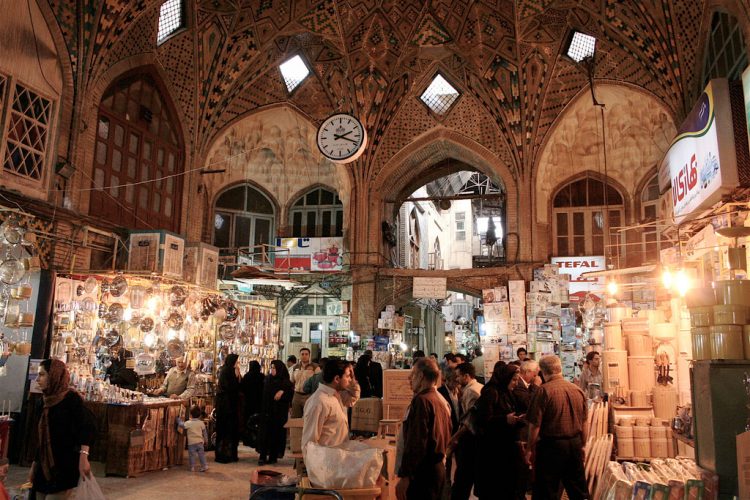Markets of the Islamic cities are one of the greatest achievements of the Islamic civilization and are not to be found in other countries. At the time Islam ruled over a large part of the world, Bazaars had become a common feature of the cities governed by Islam. Economy and religion are the two principal pillars of the Islamic Bazaars, which symbolize their difference from other markets.
Upon mentioning the word BAZAAR, any Easterner unconsciously is reminded of a place where the ceiling lets beautiful rays of sun shine from the ceiling downward at given intervals. On either side of it is situated a collection of stores. The delicious smells of various spices, the cries of sellers of goods and their customers, and the rhythmic sound of hammers of artists are associated in the mind.
The word “Bazaar” was used in the Sassanid Pahlavi texts in the form of WAZAR, and in combinations such as WAZARG (of the bazaar), WAZARGAN (business person), WAZARGANIEH (Commercial), WAZARBAD (head of the bazaar). For extra information witness jogos de casino gratis caça niqueis.
Afterwards, this Farsi word was introduced in other languages and found similar linguistic application. As a sample the equivalent of the word BAZAAR is given below several living languages, which are in fact the same word in other forms:
English: BAZAAR, French: BAZAR, Portuguese-Spanish: BAZAR, Arabic- Hungarian: Pazar, and VAZAR, Indian: BAZAR, Turkish: Bazar and Pazar.
It would appear that the universal fame of the Constantinople markets and the significant part they played in the trade between countries and, in particular, the trade between West and East had an important part in the widespread usage of this word in European languages.
A bazaar is a type of marketplace, although many – such as Tehran’s Grand bazaar – fulfill many additional functions rather than merely trade. Throughout its history, the Grand bazaar has played host to banks and financiers, mosques and guest houses.
Tehran Grand Bazaar is a historical market situated in the capital of Iran, Tehran
Traditionally, the Tehran bazaar was split into corridors, each specialising in different types of goods, including copper, carpets, paper, spices, and precious metals, as well as small traders selling all types of goods. Today, modern goods are available as well, in addition to the many traditional corridor traders that still survive.
The Grand Bazaar is located in southern Tehran; its many corridors are over 10 km in length. There are several entrances, some of which are locked and guarded at night.
While the current bazaar is most associated with the 19th century onwards, its roots go back much further.
Tehran Bazaar
December 20, 2021
0 comment

Comment (0)